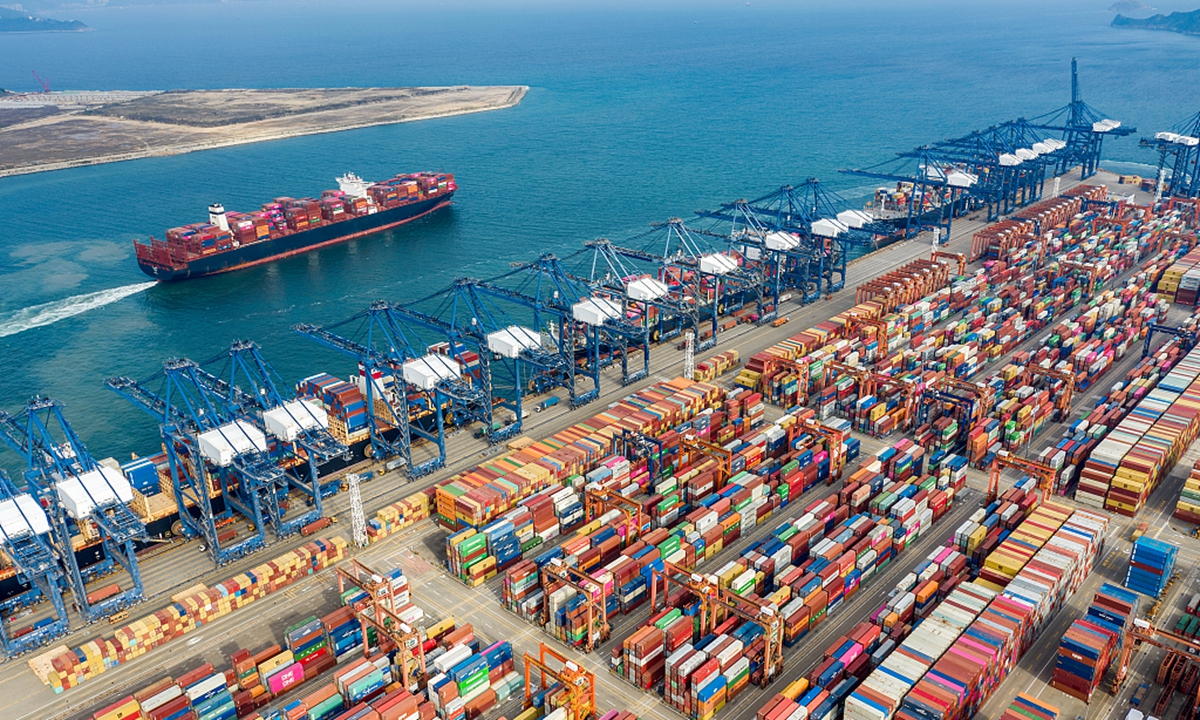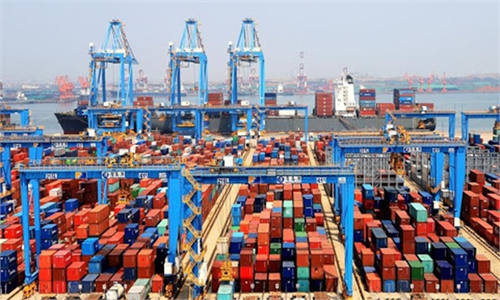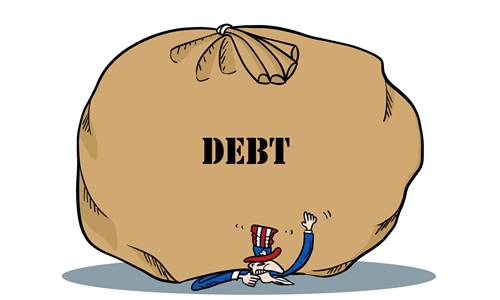Q3 GDP growth hits one-year low of 4.9% amid power crunch, COVID-19 resurgence
Indicators ‘within reasonable range’

Yantian Port Photo: CFP
China's GDP grew by 9.8 percent year-on-year in the first three quarters, though economic growth in the third quarter slowed to a one-year low of 4.9 percent amid unexpected economic challenges including a power crunch and coronavirus resurgence, but is still within the reasonable growth range, experts said, who remained unswerving in their expectation that China will have no problem meeting its previously set yearly economic target.
The country's economy expanded 4.9 percent both on a one-year and two-year basis in the third quarter, according to data released by the National Bureau of Statistics (NBS) on Monday. In the first three quarters, China's GDP grew by 9.8 percent year-on-year and 5.2 percent on a two-year basis to hit a total of 82.31 trillion yuan ($12.8 trillion).
The quarterly growth slowed down from the 18.3 percent growth in the first quarter and 7.9 percent in the second quarter, and is also slightly below market expectations of 5 percent.
The slowdown came against a backdrop of recent economic challenges, ranging from flooding in a number of cities, the resurgence of coronavirus outbursts to the widespread power crunch that is hindering production in many factories as well as the recent waves of commodity price hikes on a global scale.
Amid many US and Western media outlets' talking down of the Q3 economic performance as "disappointing", domestic economists acknowledged that the Q3 GDP growth is "relatively low", but stressed that the current growth rate is at a reasonable level, judging from economic highlights like exports, and compared with other countries' economic performance in the same timeframe.
Commenting on China's Q3 GDP growth, NBS spokesperson Fu Linghui said on Monday that China's economy is continuing to recover, and that the major macroeconomic indicators are "generally within the reasonable range."
"Considering China's GDP growth had a climbing trend last year, it is very normal that growth slopes down gradually on that basis this year. So far, China's GDP growth is suitable," Hu Qimu, chief research fellow at the Sinosteel Economic Research Institute, told the Global Times on Monday.
Paras Anand, Chief Investment Officer, Asia Pacific, at Fidelity International also stressed that "the only surprise in China's published GDP figures is that they have not come in lower," indicating that China's GDP growth is not way beyond market expectation, considering the wave of monetary, fiscal and regulatory tightening in China, according to a report sent by Fidelity International to the Global Times.
In comparison, Vietnam's GDP shrank 6.17 percent in the third quarter, while the US economy only grew at 1.6 percent in the second quarter.
Mixed performance
Among China's economic indicators in the third quarter, exports and consumption showed an improving trend, while other sectors, especially investment and industry, have been burdened with increasing pressures.
In September, China's exports rose 19.9 percent on a yearly basis to 1.98 trillion yuan, speeding up from the previous month's 15.7 percent growth, according to customs data.
Tian Yun, former vice director of the Beijing Economic Operation Association, said that the strong growth momentum in China's exports showed that China-made products will grow increasingly competitive on the global markets. This in turn showed that China's industrialization level and manufacturing standards are upgrading, as the country planned.
"This is something that we hope to see as China marches toward its 2035 development target. And from this perspective, I don't think there's too much to worry (about China's economy)," Tian told the Global Times.
Similarly, China's consumption also picked up with a year-on-year growth rate of 4.4 percent in retail sales in September, up 1.9 percentage points compared with August.
However, pressure seems to have been mounting on China's industrial and investment sectors recently. In September, China's industrial production rose by 3.1 percent from one year earlier, down from 5.3 percent growth in the previous month, the NBS data showed. Meanwhile, the growth in China's fixed-assets investment also slowed 1.6 percentage points in the first three quarters compared with the first eight months, according to the NBS data.
Wu Chaoming, the chief economist at Chasing Securities, said that the rise of bulk commodity price and power supply restrictions had a direct negative impact on the profitability of downstream industrial enterprises, which in turn ate into China's GDP growth in general.
"Currently, the biggest challenge comes from the investment sector, as market expectations for the property market are trending down as a result of banks' tightening of home loan requirements as well as the Evergrande debt crisis," he told the Global Times.
Meeting yearly target
However, experts noted that short-term negative factors such as the power crunch would likely ease in the fourth quarter with state regulations, such as the recently launched power pricing reforms.
Furthermore, Q4 consumption would also likely rebound from Q3 performance with further expansion of COVID-19 vaccination program, while trade is also likely to improve as a result of stable employment and continuous inflow of manufacturing orders from pandemic-hit countries, they said.
With the negative influences easing, China's GDP growth in the fourth quarter might hit between 2.5 to 3 percent, sending economic growth for the whole year to 8 percent, Hu said. "China will have no difficulties fulfilling its yearly growth target of above 6 percent," he said.
IMF recently also lowered its forecast for China's 2021 GDP to 8 percent from its previous forecast of 8.1 percent.
Fu Linghui, the NBS official, told the Global Times the fact that key international organizations forecast China's GDP growth at around 8 percent, a growth not only above the global average but also above that of major economies, shows the international community's optimistic outlook on China's economy.
"It also attests to the strong resilience and huge potential of China's economy," he said.
Economists also said that the Chinese government might make some policy changes in the face of growth slowdown. For example, Yang Chang, an economist at the research center of Zhongtai Securities, told the Global Times the government might need to get ready for macro policy stimulus in the face of growth slowdown, such as launching special local government bonds ahead of schedule.



